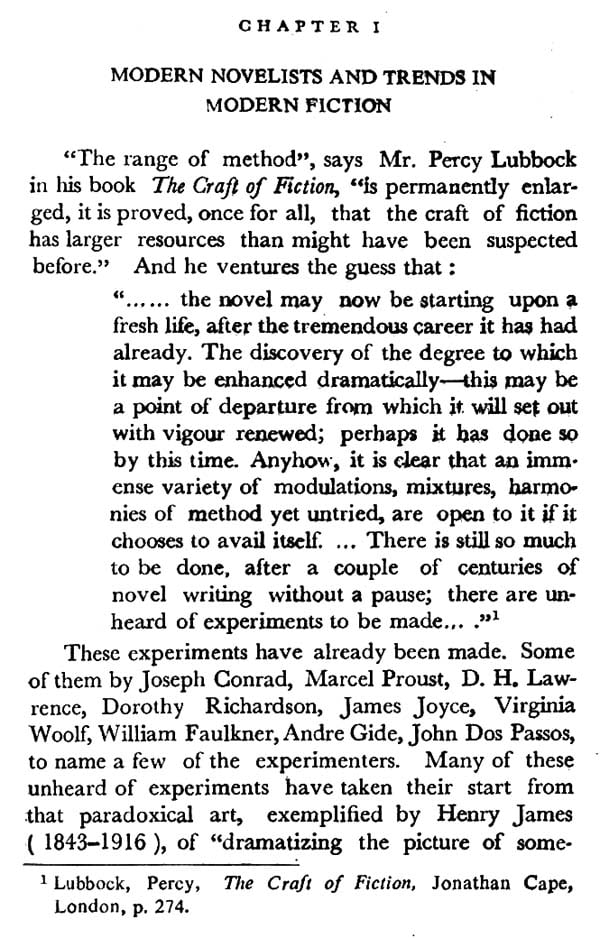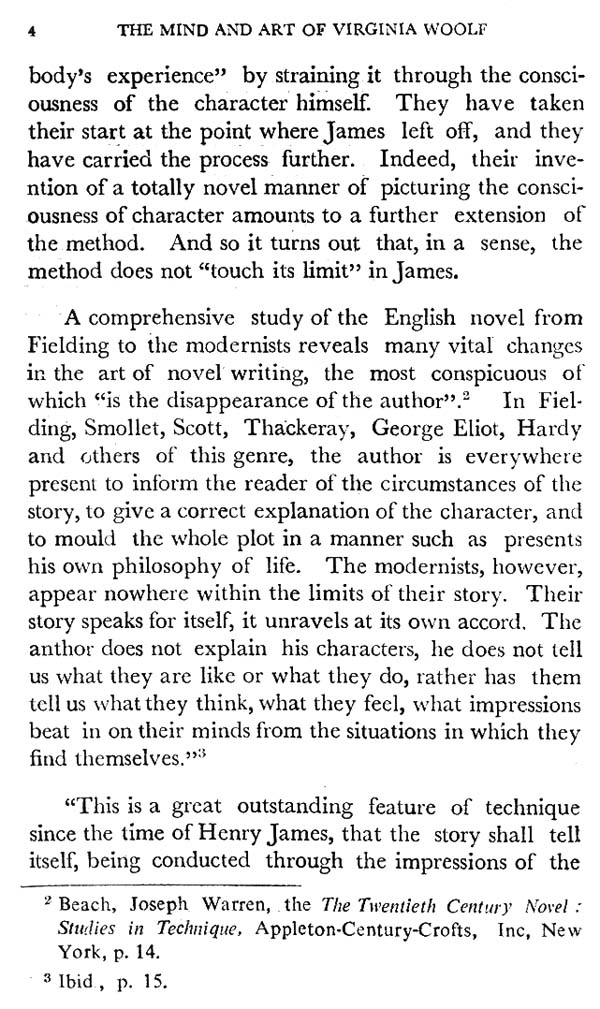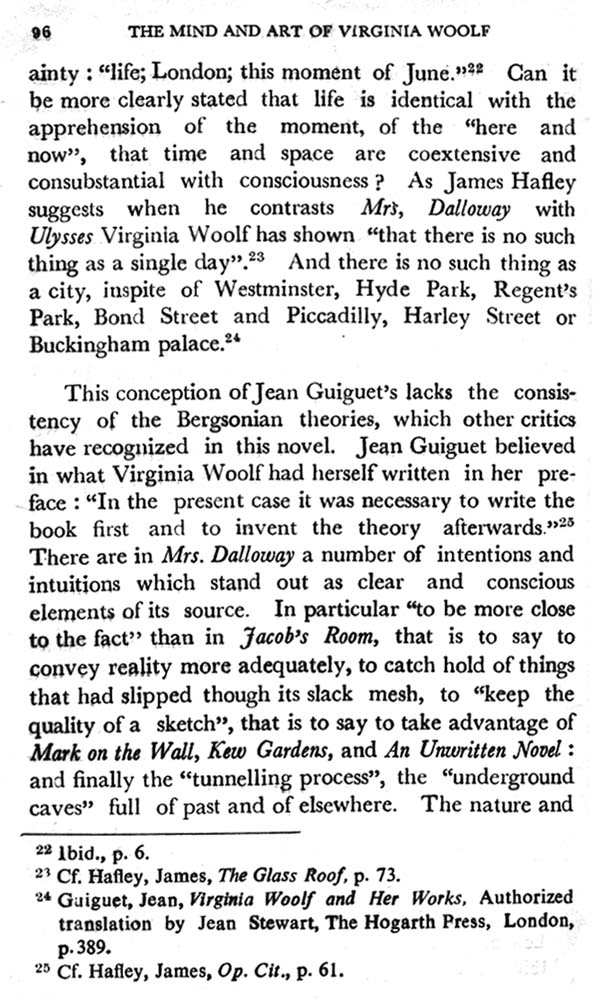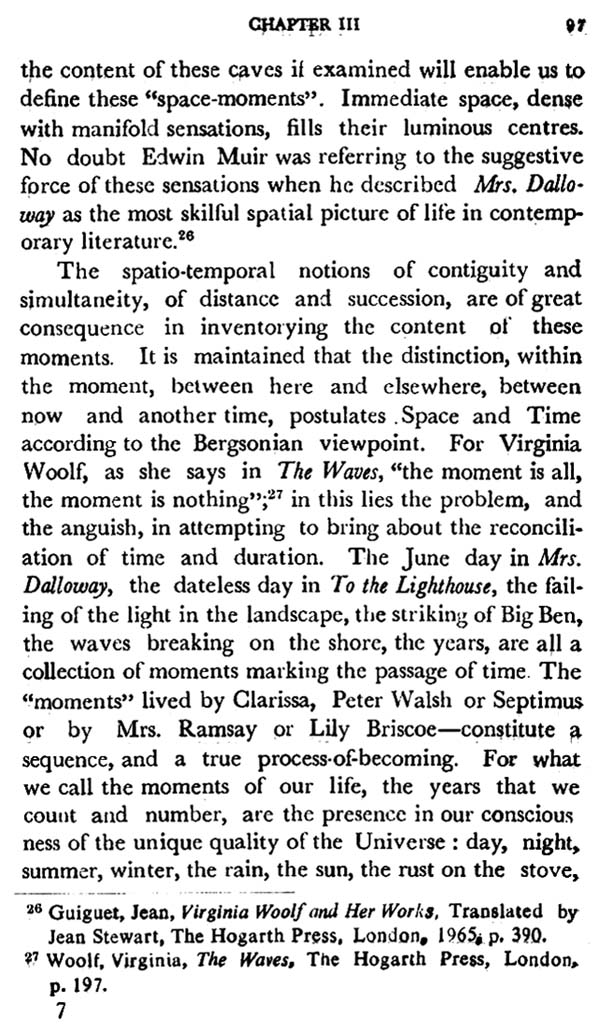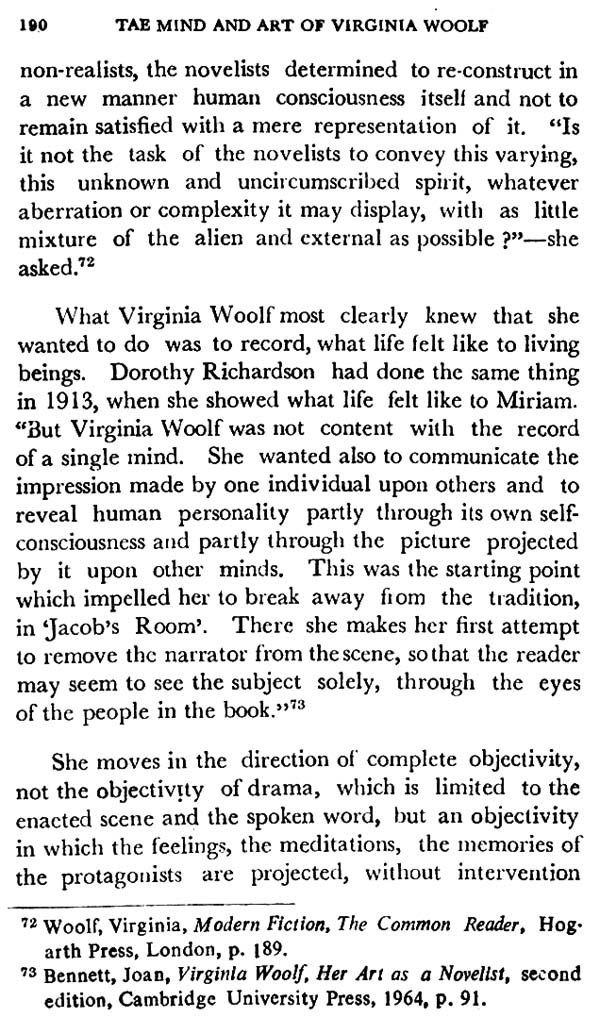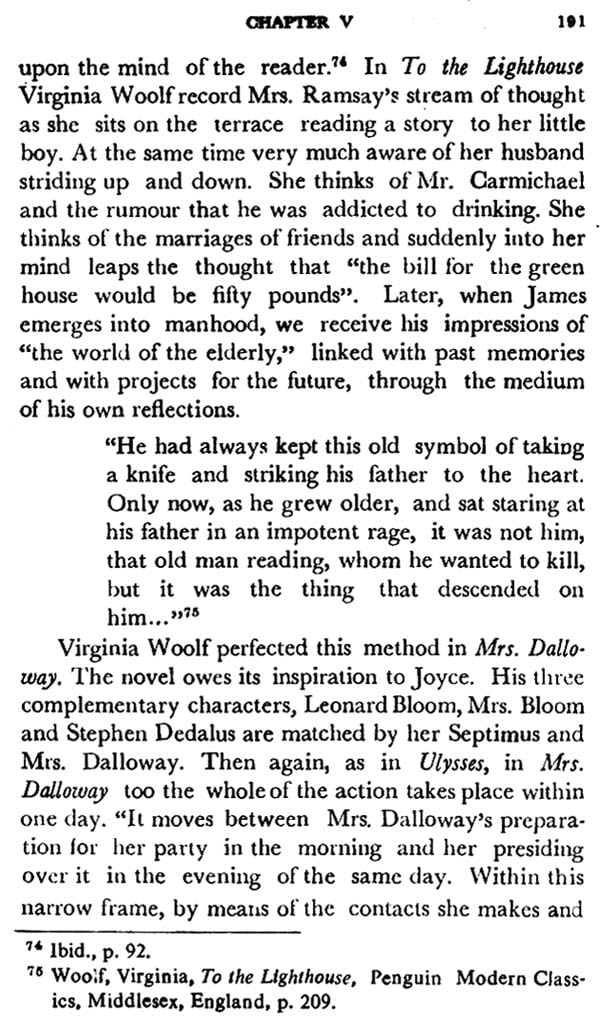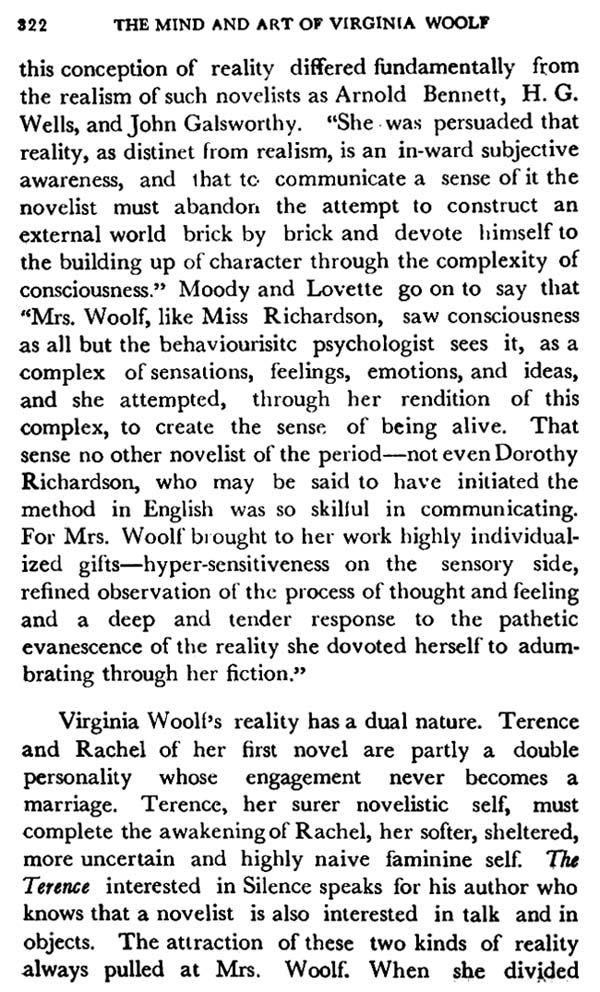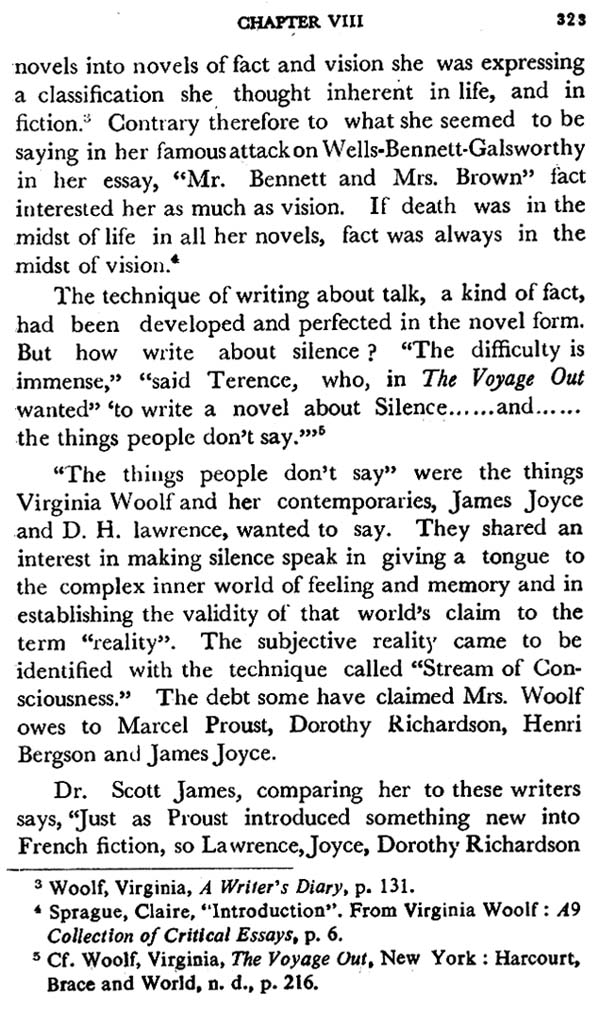
The Mind and Art of Virginia Woolf (An Old and Rare Book)
Book Specification
| Item Code: | NAV353 |
| Author: | Shaheen Warsi |
| Publisher: | CHAUKHAMBHA ORIENTALIA, Delhi |
| Language: | English |
| Edition: | 1976 |
| Pages: | 365 |
| Cover: | HARDCOVER |
| Other Details | 9.00 X 6.00 inch |
| Weight | 480 gm |
Book Description
Dr. Shaheen Warsi was born on August 27, 1949, at Delhi, India. She has been a topper and has always secured division I in every examination beginning with Senior Cambridge and ending with Master's Degree in English. She took her Bachelor's Degree from the University of Lucknow and Master's Degree in English from the University of Jabalpur. She took her Ph. D. also from the latter University. She carried most of the prizes and gold medals at the Universities where she was educated. She contributed papers on Robert Frost, Hemingway, O'Neil, Walt Whitman, Milton, Shakespeare, etc. A brilliant and analytical mind, this young lady earned an early name in the field of scholarship. She has been a first rate sportsman as well and she, captained her teams at the
The main object of this work is, firstly, to define the most characteristic aspect of the twentieth-century fiction: its subjectivity or inward turning to convey the flow of mental experience, what has been called "the stream of consciousness." And secondly, to study Virginia Woolf as a modern novelist, particularly as an Artist of the Stream of Consciousness technique.
The present work is divided into eight chapters, where the first chapter is an attempt to trace certain outstanding features of form and of subject in the modern novel, and to give a resume of the foremost writers of this period, who united in their reaction against the Victorian and Edwardian traditions. Chapter II discusses the various influences at work on the period and the writers. The influence, in particular of the French philosopher Henri Bergson whose theories. of Time and Space revolutionized the world, and of the psychologists : Jung, Freud- and Adler, whose theories of Free Association, the Conscious-Unconscious, Dream Interpretation, Character Analysis and so on gave a fresh approach to fiction. Other influences which merit a reference are those of the Russian writers, the Symbolists, Impressionists and Expressionists. Chapter III is a continuation of the second 'chapter. It gives an account of Virginia Woolf's novels in relation with the Time and Space theories. Chapter IV gives a detailed account of the gradual evolution of the stream-of-consciousness technique; the. Gradual shifting of interest from society to individual sensibility-starting from the time of Lawrence Sterne, wonting its way through the Victorian era, coming finally to Henry Jame's "well-made novel" and culminating in the works of Marcel Proust, James Joyce and Virginia Woolf. Chapter V deals entirely with the meaning, mode, method, scope and value of this technique, and lists all its features in detail, viz , its psychological and philosophical implications, dominance of the subjective element, emphasis on Realism, relation with Impressionism and Expressionism, absence of plot, dialogue and exterior description, of action and chronological time, and above all the absence of the story. The modern novel does not tell a story, it is unravelled through the stream of thought or the internal monologues of the one or several characters-the hero having been discarded. The thoughts flow on consistently without any interruption from the author. This technique encourages a depth-wise and a breadth wise cutting of life, it has the trick of prolonging the moment by moving backward and forward in space and time: "Now so far away in fancy, now so close when the mood demands." There is an obvious affinity here with the 'close-up', 'slow-motion' and 'flash-back' of the motion picture technique. Joyce has been discussed in this chapter as the unchallenged master of the Stream of Consciousness and Virginia Woolf as the sensitive artist who moulds it into a delicate and artistic form. Chapter VI is concerned essentially with Virginia Woolf as a person and as a writer. It starts with a discussion of her life, giving the details of her birth, the influence of her father Sir Leslie Stephen, her marriage with Leonard Woolf, her association with the Bloomsbury group, her propagation of feminism, the details of her work, and the circumstances of her death. In the discussion of her works the re-views, critical essays, periodical writing, pamphlets, stories, sketches and biographies are dealt with briefly, but the Novels particularly Mrs. Dalloway, To the Lighthouse, The Waves and Between the Acts arc full length studies. Chapter VII is a discussion of Virginia Woolf's poetic, lyrical and elegant style; the richness of her diction, and the mastery of her language, Joyce had created a polyphonic universal language 'With its own structural rhythm. Virginia Woolf, like Joyce, had taken up the problem of rendering reality in full, so she too created a new prose style that enabled her to communicate both felt and contemplated reality through the medium of language in fiction. Chapter VIII-the concluding chapter-is a summation of all the points discussed, giving an assessment of Virginia 'Woolf's works and her brilliant contribution in the field of modern fiction.
**Contents and Sample Pages**
